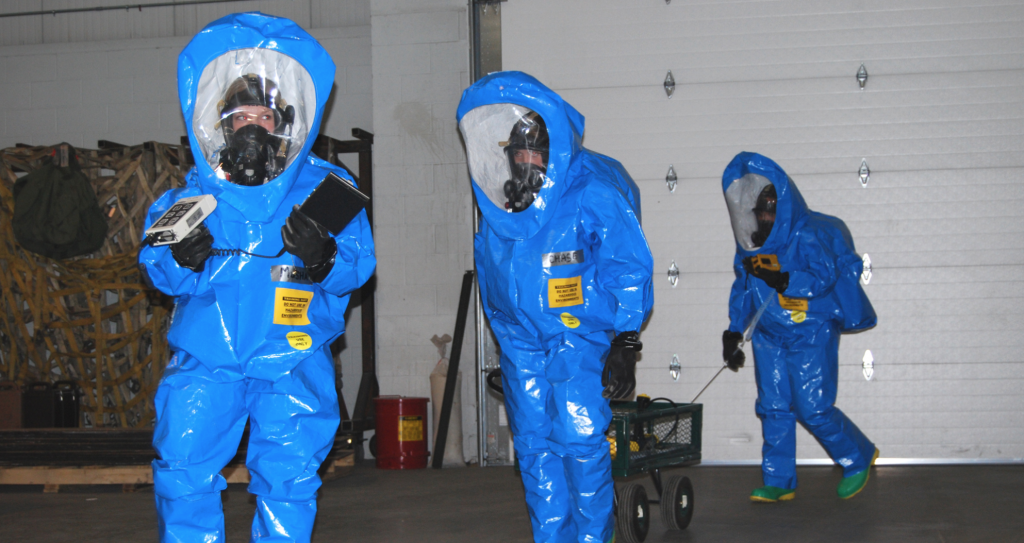Our communities are surrounded by large amounts of chemicals, either in plants and storage facilities or in trucks or trains that pass through on a daily basis. Major and potentially catastrophic chemical spills can occur at any time, without warning, and unfortunately, very few people know how to shelter in place when these emergencies arise. A common misconception is that orders to evacuate will be standard procedure when a chemical emergency occurs, but the reality is that many situations will require people to hunker down and wait for the all clear.
Let’s take a look at some basic guidelines that can help to minimize the risk of becoming exposed to toxic gases, fumes or substances in the event of a major hazardous materials incident.
Batten Down the Hatches
The first thing that needs to be done is to isolate your home from the outside world. Bring your family members, pets, friends or anyone else on your property inside as quickly as possible. Close the doors and lower the storm windows whenever possible before shutting and locking the main windows. Close off fireplace dampers, block off your vents and don’t forget to seal off exhaust fan on the stove. If there are cracks and crevices around doors and windows, seal them off with some towels or cloth.
Evacuate Upstairs
Move your survival kit, bug-out or bug-in bags along with water and food supplies upstairs to the highest secure level in your home or building. Go into a room that has the fewest doors and windows and seal them off as well. Bring your emergency radio, phone and a battery pack in case you lose power. Make sure that you also have some extra linens that can be stuffed in cracks and crevices around interior doors and outer windows upstairs as well.
The reason you want to move upstairs is that in the vast majority of cases, the liquid, vapor or gas from the chemical spill in question will most likely hover closer to the ground. Once you’re a story or two above ground, the chances of coming into contact with these hazards are significantly minimized. However, being able to seal off doors and windows and having some backup material that can be used to make the room more impenetrable will go a long way to minimize the chances of exposure to toxins that may end up wafting higher in the air.
Additional Precautions
If time permits, add an extra layer of protection by taping some plastic over vents, electrical outlets or any other point where gases or toxins can enter the area in which you are sheltering in place. Close your blinds or curtains and stay away from windows if you think that an explosion may occur due to the spill. The curtains will help to protect against flying debris while also helping to block a good portion of the toxic air outside from entering the room.
If toxic fumes end up getting into the room, cover your face, nose and mouth with a damp cloth and breathe through it. This will reduce the amount of chemicals that you inhale. While far from ideal, this extra layer of protection can go a long way toward minimizing exposure. Be prepared to climb on top of furniture or get low to the floor, as the case may be, in order to avoid inhaling the toxic fumes as much as possible.
Most importantly, make sure that you follow instructions given by emergency personnel and remain hunkered down until the all clear is announced. Fortunately, most chemical spills will dissipate or burn off within a short amount of time, so chances are that you won’t be hunkered down for too long. However, it’s important to be prepared to shelter in place for longer periods of time to be on the safe side.
Once the all clear has been given, and the outside air is safe to breathe, open up doors and windows, remove coverings on your vents and other openings and ventilate your home. This will minimize the risk of being exposed to concentrations of toxins that may have entered and be lingering in the home.
These are just a few general guidelines to consider, and it may be helpful to learn more about what chemicals pose the greatest threat in your area. This will allow you to prepare and react as efficiently as possible. The important thing to remember is that the more you can do ahead of time will allow you to react faster and take appropriate steps if and when you are faced with a hazardous materials emergency.
